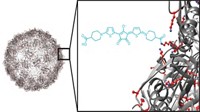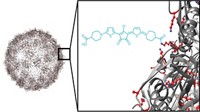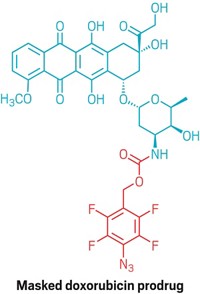Advertisement
Grab your lab coat. Let's get started
Welcome!
Welcome!
Create an account below to get 6 C&EN articles per month, receive newsletters and more - all free.
It seems this is your first time logging in online. Please enter the following information to continue.
As an ACS member you automatically get access to this site. All we need is few more details to create your reading experience.
Not you? Sign in with a different account.
Not you? Sign in with a different account.
ERROR 1
ERROR 1
ERROR 2
ERROR 2
ERROR 2
ERROR 2
ERROR 2
Password and Confirm password must match.
If you have an ACS member number, please enter it here so we can link this account to your membership. (optional)
ERROR 2
ACS values your privacy. By submitting your information, you are gaining access to C&EN and subscribing to our weekly newsletter. We use the information you provide to make your reading experience better, and we will never sell your data to third party members.
Pharmaceuticals
Hydrogel patch attacks tumors in multiple ways
Combination therapy uses an antibody, an oncogene inhibitor, and heat to kill colorectal cancer
by Stu Borman
August 1, 2016
| A version of this story appeared in
Volume 94, Issue 31

Cancer can be persistent and difficult to treat effectively, but cancer researchers can be just as persistent and difficult. João Conde and Natalie Artzi of Massachusetts Institute of Technology and coworkers have set an example in developing a nanoparticle-containing hydrogel patch that shows promising efficacy against colorectal cancer by attacking tumors in multiple ways (Nat. Mater. 2016, DOI: 10.1038/nmat4707 ).When implanted at tumor sites in mice, the patch delivers several treatments as the gel breaks down over time. Gold nanospheres in the patch carry two components: siRNAs that turn off KRas, which is an oncogene that makes cells cancerous, and a cytoplasm-localizing peptide that helps optimize siRNA activity. Gold nanorods in the patch carry the antibody drug Avastin, which blocks cancer cell growth. The nanorods also generate tumor-damaging heat when a phototherapy probe shines near-infrared light on them. Both the nanospheres and nanorods include a tumor-localizing peptide and a fluorescent group for imaging the nanoparticles. In the mice, the patch eradicated tumors completely. And when administered after surgical tumor removal, the patch prevented cancer recurrence. “Future studies will focus on utilizing colonoscopy equipment to deliver our therapeutic platform in a minimally invasive manner,” Artzi says.





Join the conversation
Contact the reporter
Submit a Letter to the Editor for publication
Engage with us on Twitter